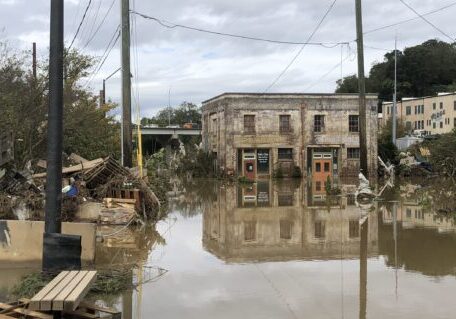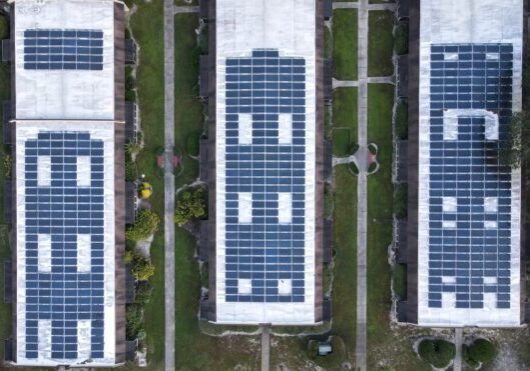April 25, 2023
Electric Vehicles in the Community: Challenges and Solutions
By Michael Brower
The opportunities presented by electric vehicles (EVs) to improve the environment, economy, health, and resilience of communities are substantial. What, then, is discouraging many communities – especially lower-income communities and communities disproportionately impacted by vehicle emissions – from embracing EVs?
One of the first challenges a community is likely to encounter is the capital investment required to pay for EVs. Replacing aging school buses, community vans, and municipal vehicles is always expensive; despite recent cost reductions, replacing them with electric vehicles is still more so without grants or subsidies. Beyond the vehicles themselves, the charging infrastructure – charging stations for vehicles as well as bidirectional vehicle-to-grid (V2G) ports for powering essential services in the event of a blackout – adds to the cost. Unfortunately, financing options that are available for private car owners, such as tax credits and rebates, often cannot be used by government agencies, schools, or nonprofit institutions.
There are public mechanisms that can help fund community EV initiatives, however. For example, with $5 billion in funding available over 5 years, the US Environmental Protection Agency’s (EPA’s) Clean School Bus Program presents an enormous opportunity to make school bus fleets green. $1 billion in funding has already been made available in the form of rebates through October 2022, which will fund 2,600 clean school buses, 95% of them electric.1 Notably, low-income, rural, and tribal school districts receive priority, meaning they can receive up to 50% more funding per bus purchased than other qualifying applicants.
Nevertheless, navigating the EPA’s application process (and that of other agencies, state or federal, with similar programs) can be complicated and intimidating, and once grants are awarded, the reporting requirements can be onerous. As one site devoted to school transportation noted, “there’s no such thing as a free electric school bus.”2
Sometimes funding can come from private sources. In Virginia, for example, the Fairfax County Public Schools (FCPS) received $1.968M to cover the additional cost of eight electric school buses and charging infrastructure from the local utility company, Dominion Energy. (An additional $2.65M was awarded by the Virginia Department of Environmental Quality for ten additional buses.) As part of the arrangement, Dominion owns the bus batteries and motors as well as the charging infrastructure and retains the right to use the buses for supplying grid power when needed. In this way, both Dominion’s and FCPS’s goals are met.3
Another example of how community institutions can fund green transportation initiatives is the Glad Tidings Church in California, which is financing its “Clean Energy Hub” through a combination of grants, energy savings, and revenue generated from EV charging services.4
Low-income communities and communities of color are often at a particular disadvantage when it comes to designing, funding, and implementing EV transportation initiatives. As noted in previous blogs, low-income households may not be able to afford many of the EVs on the market today, and, lacking sufficient taxable income, cannot take advantage of the full value of tax credits. Historically marginalized communities often lack the necessary investment in EV charging infrastructure as well, leading to EV “charging deserts.”5 In neighborhoods with a high proportion of renters compared to homeowners, access to overnight charging often depends on landlords taking an interest. Where there is revenue to be earned or incentives offered, it’s often the property owner who receives the benefit, further reducing the financial incentive for renters to own EVs.
At the same time, resources aimed at delivering the benefits of EVs to historically marginalized communities are becoming more widely available. Forty percent of the Federal $2.5B Discretionary Grant Program for Charging and Fueling Infrastructure is reserved for qualifying lower-income communities. Unlike the more widely known National Electric Vehicle Infrastructure (NEVI) program supporting high-speed charging on highways, this initiative emphasizes Level 2 chargers appropriate for residential areas. Electric utilities also often set aside funding for infrastructure investments in currently underserved communities, as well. Southern California Edison, for example, plans to dedicate 50% of its EV charging spending to disadvantaged communities and has reached out to these communities to prioritize public fast-charging investments.6
Beyond the funding challenges, green transportation initiatives can be technically complex and require cooperation and engagement by other institutions, private and public. For example:
- Local utility involvement is critical to create a fleet charging infrastructure and to allow V2G or vehicle-to-building (V2B) bidirectional charging where desirable. Ideally, the utility will charge a lower price for charging during off-peak periods and will buy back power from the community EVs at a premium price when needed in peak times and create opportunities for additional revenue generation by compensating EV owners for participation in demand response and other types of grid-services programs.
- Designing, planning, and installing the optimal fleet charging infrastructure can be a technically challenging task. With expert analysis, it is often possible to design a charging strategy that greatly reduces the infrastructure cost compared to a simple one-charger-per-vehicle approach. A combination of mostly overnight (Level 2) charging points with a small number of fast (Level 3) charging points will often do the trick. In some cases, installing stationary energy storage systems may be beneficial to facilitate interconnection of EV charging infrastructure on the distribution system and lower demand charges for customers hosting fast chargers.
- Expertise is also required to plan for V2G/V2B backup power. Key community services to be protected need to be identified, their typical loads and daily load profiles measured, and V2G charging stations with smart capabilities to cut off the power from the grid in times of outages need to be installed and integrated into existing building energy systems.
Considering challenges such as these, successful community transportation electrification initiatives often must entail partnerships among representatives from many different groups: program funders; electric utilities; town and state government; school and/or community service agencies; EV and EV charger manufacturers; installation contractors; various experts on design, engineering, and installation of EV infrastructure; and civic leaders and other stakeholders among the general public, such as parents of school-age children and community members dependent on public transportation. To drive such a complex initiative, a community will benefit greatly from having an effective “champion” – someone like Gil Rosas, who now leads Modesto, California’s electric bus initiative, and the organization Moms Out Front (MOF), which solicited support from the Fairfax County Public Schools board to create that district’s successful EV program.
Overcoming Barriers to Equitable EV Adoption
Without targeted, intentional strategies and interventions, the adoption of electric vehicles and deployment of EV charging infrastructure will not occur equally or equitably among all communities. Those communities most impacted by vehicle emissions today, largely lower-income communities and communities of color living near highways and transportation hubs, will be left behind as wealthier communities reap the benefits of available incentives and easier access to financing and investment. These discrepancies have nothing to do with differing levels of interest in EV adoption. A recent Consumer Reports study found that respondents of color were just as interested in purchasing or leasing an EV as White consumers. The report found that, in addition to cost concerns, lack of access to public charging was one of the most significant barriers preventing greater EV adoption.
No single incentive or strategy necessarily represents the best approach to achieve more equitable EV deployment. It will take a multifaceted effort, which will differ depending on each community and the barriers they face. The following represent a few initial considerations for essential components to promote greater equity in EV planning and deployment processes.
- Transparent and Inclusive: Federal, state, community, and utility EV planning efforts must prioritize transparent and inclusive processes. Communities that may be impacted by EV and EV charging deployment efforts or that are currently being negatively impacted by transportation emissions should be engaged early on and throughout the process. Planning documents and decision-making processes must be easily accessible, and planners must commit to hearing, responding to, and incorporating the goals and concerns of all community members. Educational materials and listening sessions designed to inform and address the needs and concerns of historically marginalized communities are essential to ensure more equitable participation in planning processes.
- Comprehensive and Flexible: EV planning must consider the needs and impacts of all types of transportation, not just single-family passenger vehicles. All too often, EV incentives and programs are focused primarily on single-family households that own their homes, deepening existing income-based and racial inequities. EV planning should explore high impact, though at times more challenging, applications, such as public transit and rideshare vehicles, as well as electrification of heavy transportation responsible for a higher proportion of harmful local emissions. EV charging planning must prioritize the developing of accessible and reliable public charging infrastructure and target deployment in currently underserved areas. Additionally, planning processes should be constantly evaluating the impact and outcomes of EV deployment measures to determine where benefits are flowing and if adjustments need to be made.
- Center Equity from the Start: Equity-based goals and how achievement of those goals will be tracked and measured over time must be established before the launch of new EV programs. EV incentives and financing initiatives must be available to all community members, with a focus on serving those facing the greatest barriers to EV adoption. Program goals and how they will be measured should be determined in partnership with the communities they are intended to benefit, and mechanisms need to be put in place to ensure that program administrators are held accountable for meeting established milestones.
EVs have the potential to be a transformative technology for the transportation sector, the energy system, and environmental justice, as they can significantly reduce greenhouse gas and local pollutant emissions, decrease the overall cost of mobility, and help address the climate crisis. However, there are numerous equity concerns that must be addressed to ensure that the benefits of electric vehicles are distributed fairly and that historically marginalized communities are not again left behind. Policymakers must take a proactive approach and adopt inclusive processes to address these concerns by investing in charging infrastructure in low-income communities and communities of color and providing targeted incentives and innovative financing options to address EV affordability issues faced by lower-income households and community-serving nonprofits. Only when equity is genuinely centered and prioritized, will the full potential of electric vehicles be realized to achieve a sustainable transportation system.
Michael Brower is the former President of AWS Truepower, LLC, a global renewable energy consulting firm, and the former Vice President for Renewable Energy at Underwriters Laboratories. A physicist by training, Michael is currently a partner at Clean Energy Ventures Group.
This is the fourth and final blog in a series on EVs and equity – read part 1, part 2 and part 3. Stay tuned for a June 2023 webinar series on the topic of EVs and equity.
Footnotes:
(1) https://www.epa.gov/cleanschoolbus, https://www.epa.gov/system/files/documents/2023-02/420r23002.pdf, and https://www.epa.gov/system/files/documents/2022-06/clean-schl-bus-rebates-how-to-apply-2022-06-29.pdf
(2) https://stnonline.com/news/theres-no-such-thing-as-a-free-electric-school-bus-webinar-says/
(3) https://www.wri.org/update/electric-school-bus-series-electrifying-partnership-fairfax-county-virginia
(4) https://www.cleanegroup.org/webinar/glad-tidings/
(5) https://www.washingtonpost.com/business/2021/12/09/charging-deserts-evs/
(6) https://www.aceee.org/sites/default/files/pdfs/t2201.pdf
(7) https://advocacy.consumerreports.org/wp-content/uploads/2022/09/EV-Demographic-Survey-English-final.pdf














